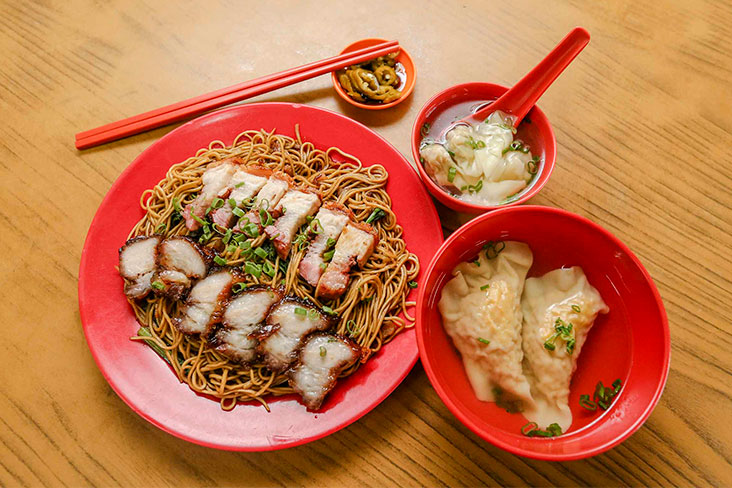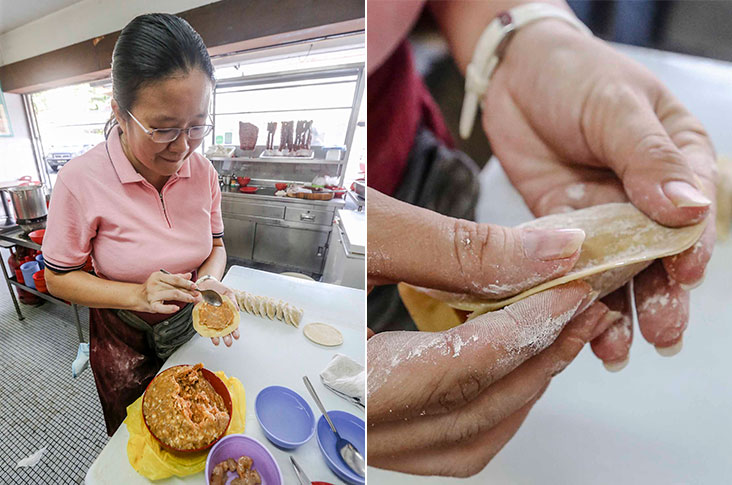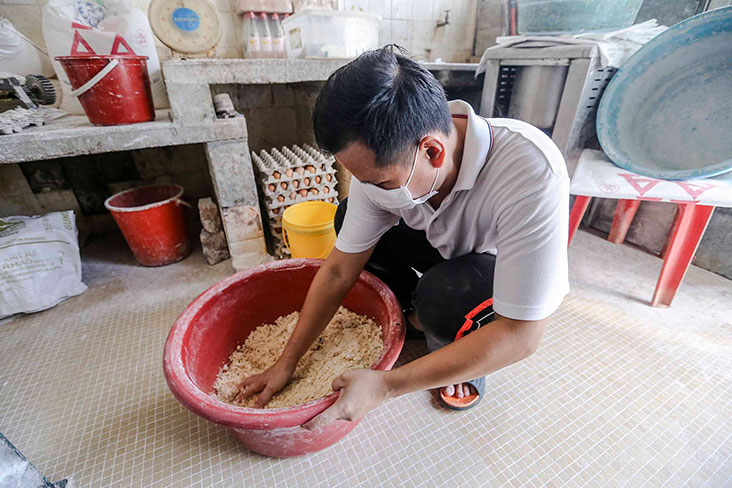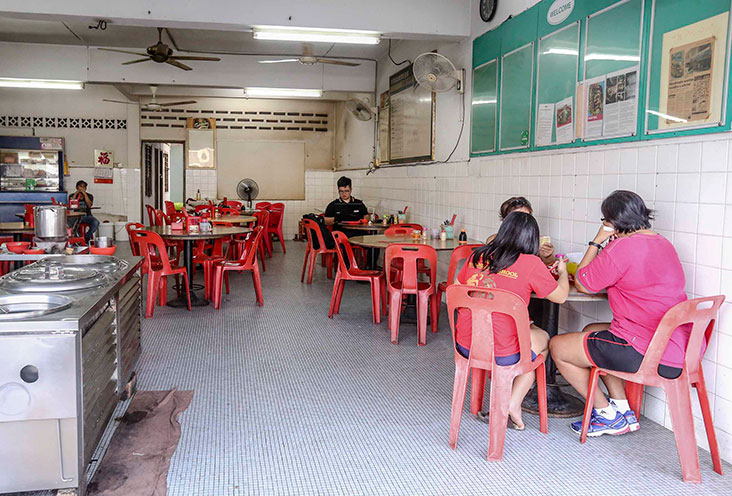PETALING JAYA, Nov 18 — Love makes us do strange things. Like, how Goh Wee Peng, 39, ended up making wantan mee... all for the love of noodles!
The Muar native can never resist wantan mee which he can eat every day. Wherever he goes, from Bidor, Penang, Bentong and even Johor Baru, he’ll try their wantan mee. Of course, the ultimate wantan mee is the one he grew up eating back in his hometown: a stall that he describes as “a simple taste just like home.”
When he was studying at HELP University, Goh stumbled upon Restaurant K. Intan. Located in Section 17, PJ, it was just a stone’s throw away from where he was staying.

The simple eatery with an old town vibe was run by a husband-and-wife who originally came from Kuala Intan, a small village in Perak. They had ventured out to the city since their children had moved here.
What everyone was drawn to were their noodles that were made fresh on the spot without any preservatives. For Goh, the taste of the handmade noodles was reminiscent of his hometown since they didn’t use a lot of kan sui or alkaline water. He admits to a dislike for kan sui since it can give a bitter tasting edge to the noodles, should you use too much of it.
After he graduated from his business administration course, Goh worked for a short stint in Singapore. That experience left Goh disillusioned with the corporate world.

Together with his wife Tan Chu San, 38, they both realised it made better sense for them to invest their blood, sweat and tears to build up their own business. Most importantly, it also allowed them greater time flexibility. Hence, Gan decided to pick up noodle making skills at the restaurant.
For a few years, he worked as an apprentice under his noodle sifu. After he had learned the ropes, he decided to venture out on his own. The couple operated their own stall which was located in a coffeeshop at Setapak.
Unfortunately, a year later, they returned back to the restaurant as Goh’s sifu had health issues. Eventually they took over the entire shop in 2005, after his sifu died.


Till today, you will find Goh continuing his sifu’s handmade noodle legacy. Every day, you’ll find him at the back of the restaurant, making noodles. Sometimes, it may take a few rounds as they make small batches of the noodles, to keep them incredibly fresh.
In the morning, he’ll mix up a batch of the dough. A lot of chicken eggs and high gluten flour are used. A dash of water is also used to bind the ingredients together. Goh does add a little kan sui to the mixture since it’s impossible to omit it. “If there’s no kan sui, it won’t be noodles,” explained Tan.

The dough mixture may look like rough crumbs but everything comes together when it’s dumped into a noodle machine that presses it out into a sheet of dough. Goh repeats the process a few times, adjusting the dials on the side for its thickness, as the rolls of dough get thinner and smoother.
Throughout this process, you see Goh dabbing potato starch on the dough to prevent it from sticking. Once it is smooth enough, Goh will use the machine to cut it into strands. The noodles will be portioned out.


This, he explains to us, makes it easier to cook the separated portions. Using just his hands as a guide, he’ll take a bunch of noodles, twist them into bundles before ripping them by hand. Each action is a swift one as he tears them into easy to cook portions.
He tells us as there’s no preservatives in their noodles so they tend to discolour even after a few hours. You can also purchase the noodles. He advises that it’s best to store them in the freezer. Goh tells us the noodles taste really good when deep fried to make yee mee.


Bite into the noodles and you’ll notice that the strands are a little thicker than commercial ones. They also have a not overly springy texture but a nice bite, thanks to the abundant use of eggs in the dough.
Most importantly, when the noodles are left for a few minutes and even longer, they don’t stick together since less kan sui is used. This is totally unlike the commercial versions that stick together into a ball when it’s packed back.


Tan tells us that some of her customers even keep it till night time before they eat it. One customer even brought their noodles to Melbourne to eat the next day! Usually Tan advises them to ladle a little soup over to loosen the strands.
Just before they are served, the blanched noodles are glazed with a mixture of soy sauce, dash of dark soy sauce, lard and a bit of shallot oil. Tan advises that using too much lard will make the noodles too rich for the palate, hence they mix a little of fragrant oil used to fry shallot crisps.

Accompanying the noodles are their own-made roasted meats. The char siew has a glistening, charred top with a balanced mix of meat and fat. Tan tells us a lot of customers requested for less fats but they decided this pork belly cut suits this item best — a nice balance with a little fat and meat.
She believes that if there’s no fat in char siew, it’ll be inedible since it will be too dry. Similarly, their siew yoke is a nice crunchy version with a juicy meat and fats that melt in the mouth. The roast pork with its crunchy, golden top is only available during lunch time. It’s only their char siew that is made for their dinner session.

You also have braised chicken feet with mushrooms (kai kiok tungku) prepared by Tan using her family recipe. Not many know of its existence as she stopped serving the dish for one year before recently resuming it. Most customers tend to order their noodles with siew yoke or char siew. If you can’t decide between both roasted meats (they’re both good), go for both selections to satisfy your cravings.
And no meal here is complete without their delicious siu gao or dumplings. The couple insist on wrapping the dumplings themselves... in small batches. With deft hands, Tan will be filling the wrappers with the minced pork mixture with carrots and water chestnuts. A piece of shelled prawn is placed inside before the wrapper is sealed with water. This is all cooked according using their timers, making sure everything is ready to eat.
Don’t ignore the clear soup which is served with the dumplings and wantans. The sweet broth is made from boiling a whole chicken and pork bones. Previously Tan’s customers would ignore the soup assuming it’s just made from another MSG-laden broth. Once they saw she uses chicken in her broth, they now ask her for seconds.

As the couple have been in business more than 10 years, whenever they see anything interesting, they’ll add to their restaurant. The latest addition is a blended green chilli sauce. Goh had sampled a similar chilli dip when he was eating pan mee. Made from tiny green bird-eye’s chillies, a dab of the sauce with your soy sauce gives it a potent kick. Their customers love it. Some even use their red chilli-vinegar sauce they serve with their dumplings to eat with their noodles!
Tan tells us, it’s the same sauce, she’ll serve at home with chicken rice. Traditionalists can reach out for their crunchy pickled green chillies. The piquant chillies complement the wantan mee perfectly.
A day’s work for the couple starts as early as 6am when preparation starts before they open their doors just before 9am. After the last lunch is served, usually by 2.15pm, they’ll wind down to rest for the afternoon. By 6pm, they’ll be open for dinner. You’ll be surprised but there’s customers who come by at night to get their wantan mee fix.

It’s long hours every day for the couple but for both of them, it’s satisfying to build up their reputation. Even though many have asked them to expand, Tan explained it’s not so easy as they want to maintain the quality of their food. Even though they have employed helpers, you will find both of them doing the important tasks themselves.
Our hats off to them for keeping up with the quality despite the hard work.
Restaurant K.Intan
616, Jalan 17/10
Section 17
Petaling Jaya
Tel: 012-754 1287
Open: 8.45am to 2.15pm, 6pm to 8.30pm
Note: The restaurant is closed today but resumes business on Monday
Facebook: https://www.facebook.com/Restoran-K-Intan-九香云吞面-654794751574775/






















